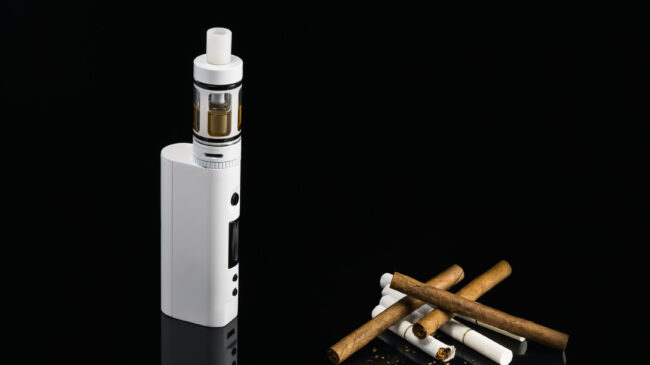E-cigarettes are a significantly safer form of nicotine consumption than combustible cigarettes. But policymakers have to strike an appropriate balance between promoting e-cigarettes to adult smokers while limiting youth access to these products.
In recent attempts to achieve this goal, the federal tobacco age has been raised to 21, the Food and Drug Administration regulates all e-cigarette products, and non-tobacco and menthol flavors have been banned in the most popular e-cigarette products until authorized as “appropriate for the protection of public health by the FDA.” Since Congress last examined this issue in 2020, the data on youth vaping and e-cigarettes’ effectiveness for smoking cessation, as well as the consequences of restrictive vaping policies, has developed significantly.
Youth vaping and smoking rates.
- According to the 2020 National Youth Tobacco Survey (NYTS), youth vaping declined nationally by 28.7 percent. The percentage of high school students reporting vaping at least once in the past month stands at 19.6 percent. This figure may in fact be an overestimate, as the survey questions do not adequately distinguish vaping nicotine from vaping marijuana. The survey was conducted before the closure of schools and the imposition of lockdowns in response to the coronavirus pandemic. Youth smoking is at the lowest level on record at 4.6 percent, a 70.8 percent decline since 2011.
(Source: U.S. Food and Drug Administration)
- The latest data available on other substance use by high school students 29.6 percent use alcohol, 21.7 percent use marijuana, and 7.2 percent misuse prescription opioids at least once a month.
- An analysis of youth vapers in 2020 showed Juul, the market leader in pod-based e-cigarettes, is no longer as widespread as previously thought, with 74.6 percent of youth who vape using a product other than Juul.
The relationship between E-cigarette flavors and youth smoking.
- In 2018, San Francisco banned the sale of all flavored tobacco products, including e-cigarettes with flavors other than tobacco. Yale University’s Abigail Friedman found that after the ban was enacted, San Francisco area youth had double the odds of smoking compared to similar jurisdictions with no tobacco flavor ban. “While neither smoking cigarettes nor vaping nicotine are safe per se, the bulk of current evidence indicates substantially greater harms from smoking, which is responsible for nearly one in five adult deaths annually. Even if it is well-intentioned, a law that increases youth smoking could pose a threat to public health,” said Friedman.
- A survey conducted by the Centers for Disease Control and Prevention (CDC) said flavors are not the leading reason why youth start vaping. According to the CDC, the primary reason youth initiate vaping is “curiosity,” followed by “friend or family member used them,” with “they are available in flavors, such as mint, candy, fruit, or chocolate” coming a distant third.
- According to a 2020 study by researchers at Yale School of Public Health, the use of e-cigarette flavors is positively associated with smoking cessation outcomes for adults but not associated with increased youth smoking.
Vaping and COVID-19.
- A study based on internet survey responses published last year claimed young people who vaped were significantly more likely to be infected with COVID-19 than those who didn’t. The study was severely criticized for faulty methodology and communication of results. Congressman Krishnamoorthi used the study as justification to demand a ban on the sale of all e-cigarettes for the course of the pandemic.
- More substantive research conducted by the Mayo Clinic examining 69,264 patients published June 10, 2020, found no association between vaping and the likelihood of being diagnosed with COVID-19.
E-cigarettes as effective smoking cessation tools.
- In 2020, the Cochrane Review, often considered the gold standard of evidence-based medicine, released a report concluding e-cigarette users were more likely to quit smoking than those using traditional nicotine replacement therapies.
E-cigarettes and FDA regulation.
- The FDA is reviewing all e-cigarette product applications that contain reams of data on safety, efficacy, and potential threats to youth. If the FDA finds that any product is on net harmful to public health, it will be removed from the market. But if the product is deemed to be net beneficial, it will be authorized for sale as appropriate for the protection of public health.
- Banning these products prior to the FDA concluding its review would limit consumer access to products the FDA may deem as positive for public health later this year.

